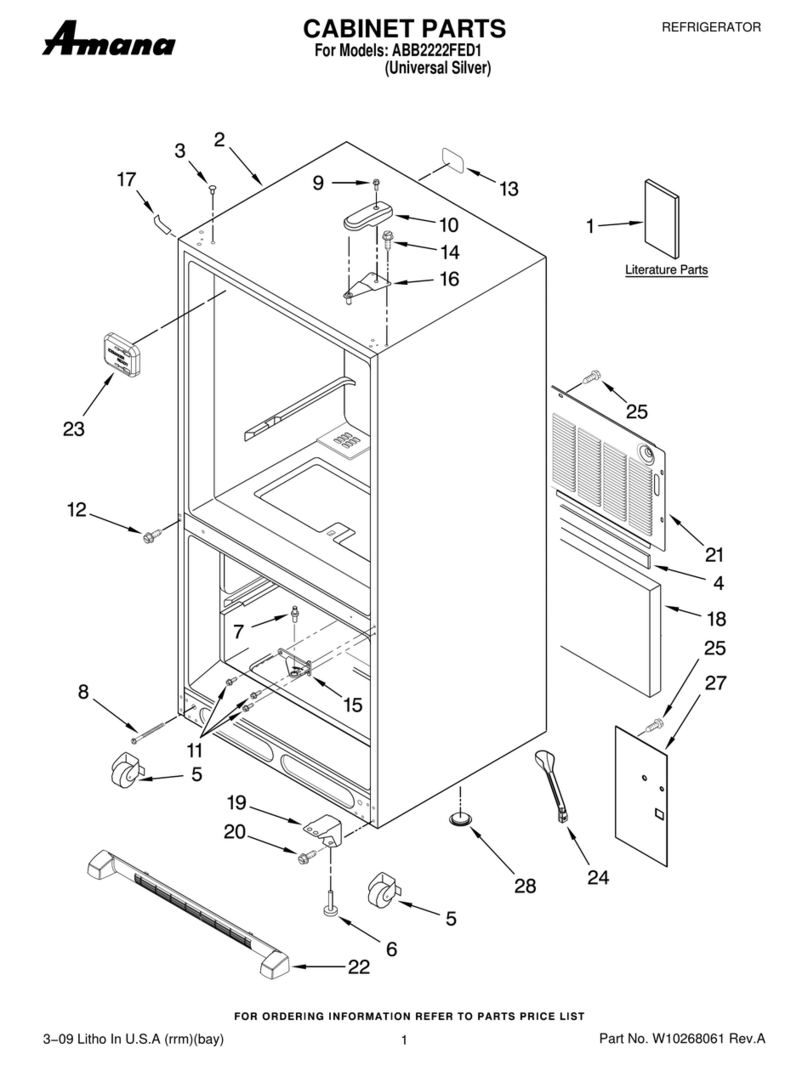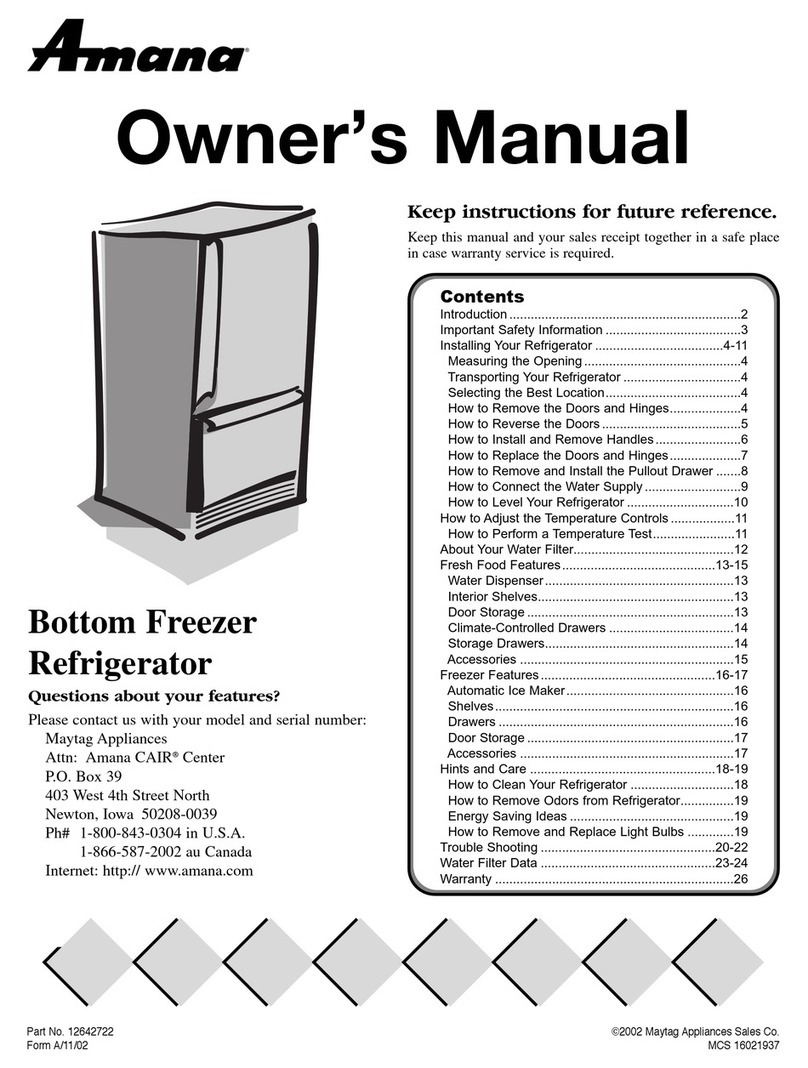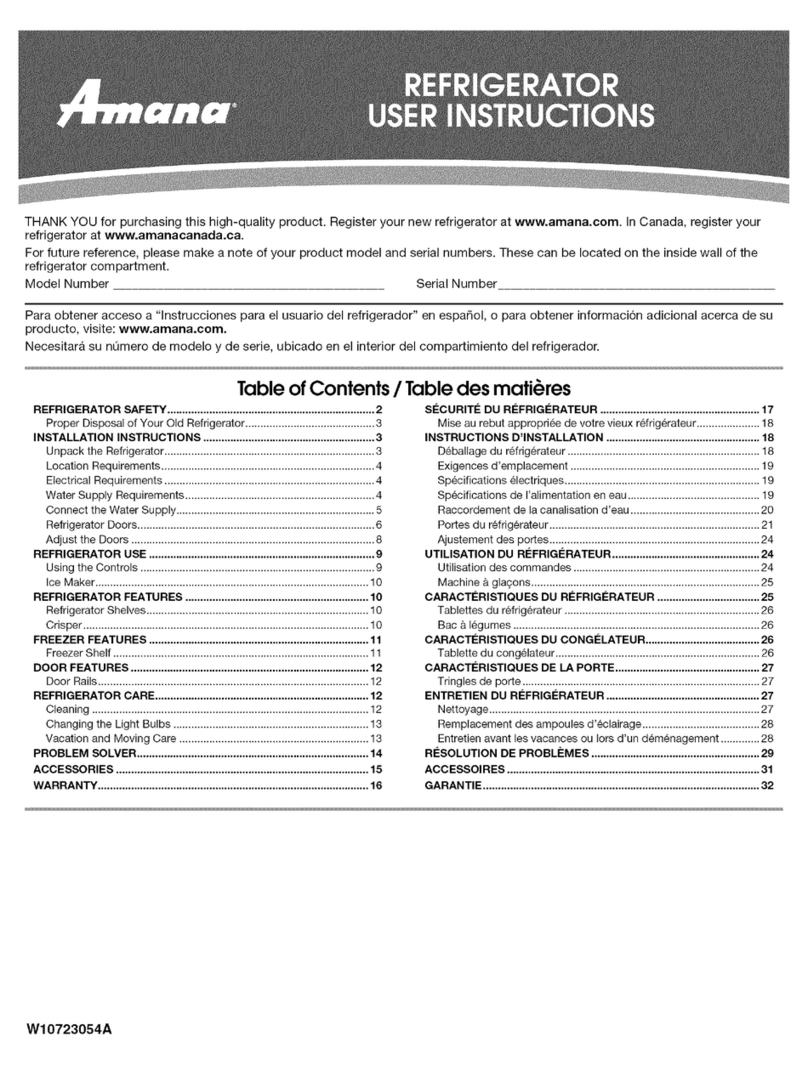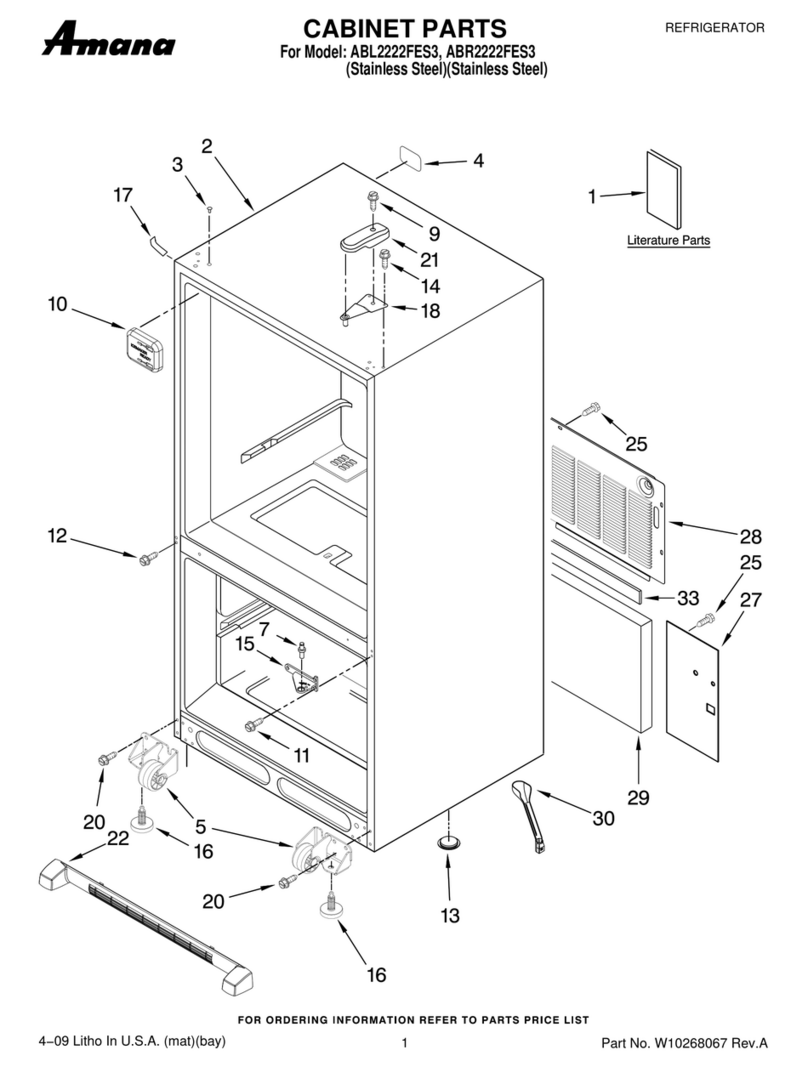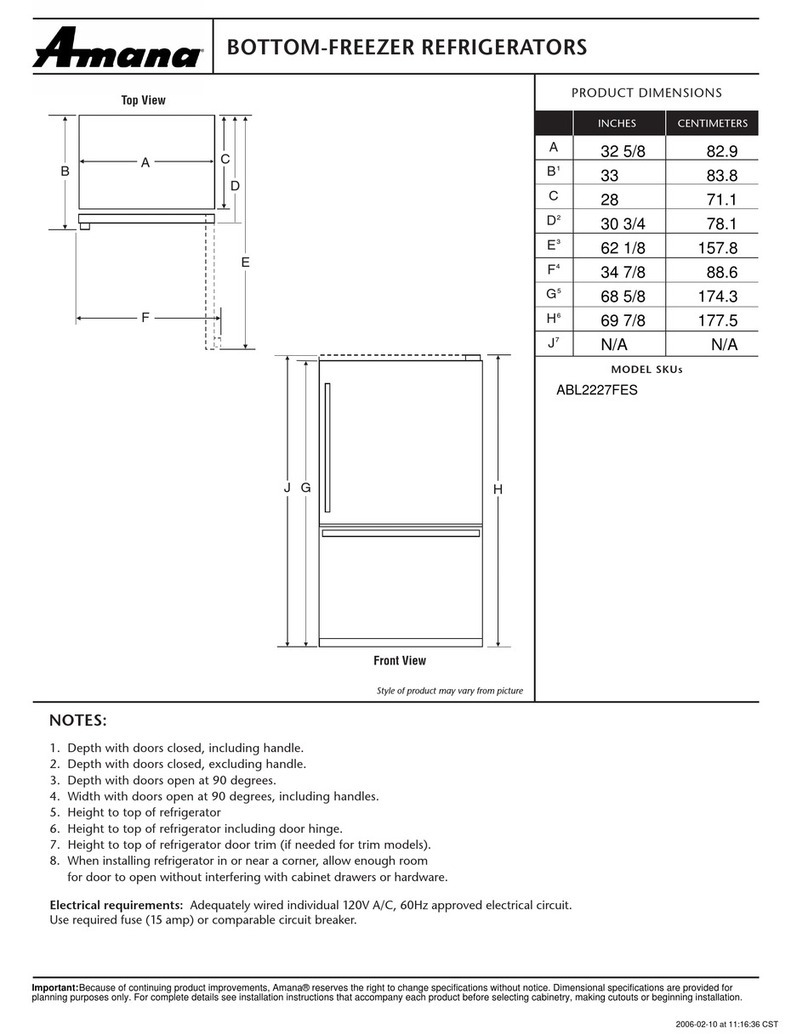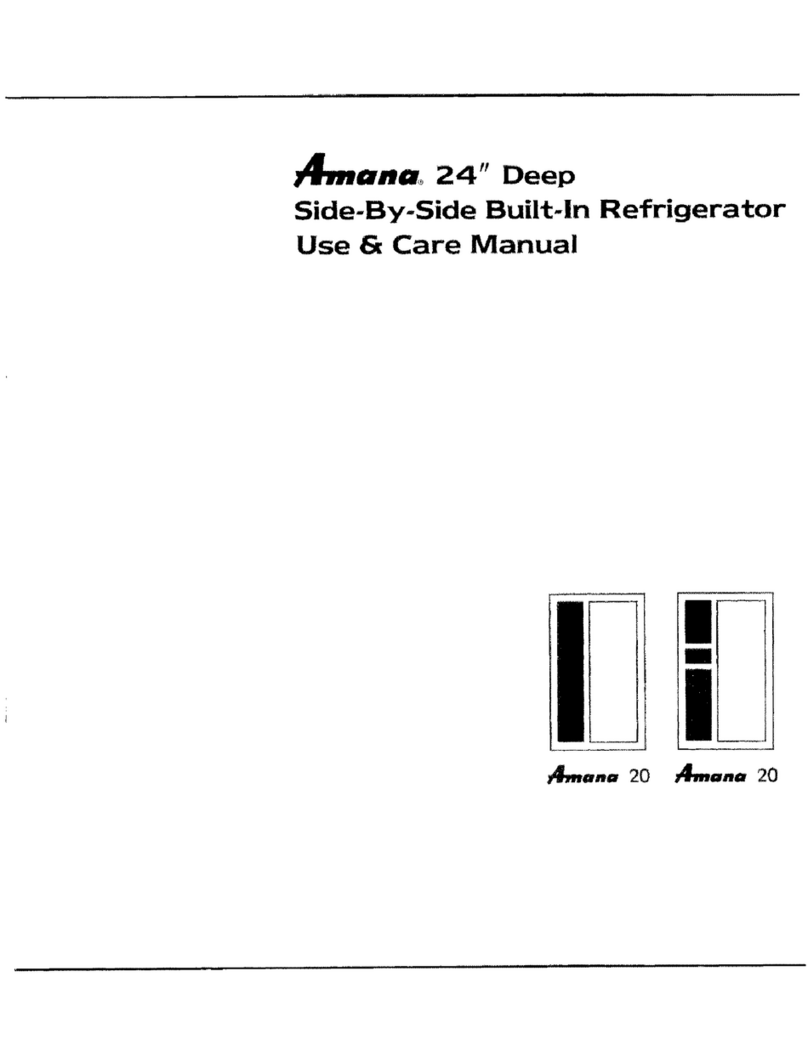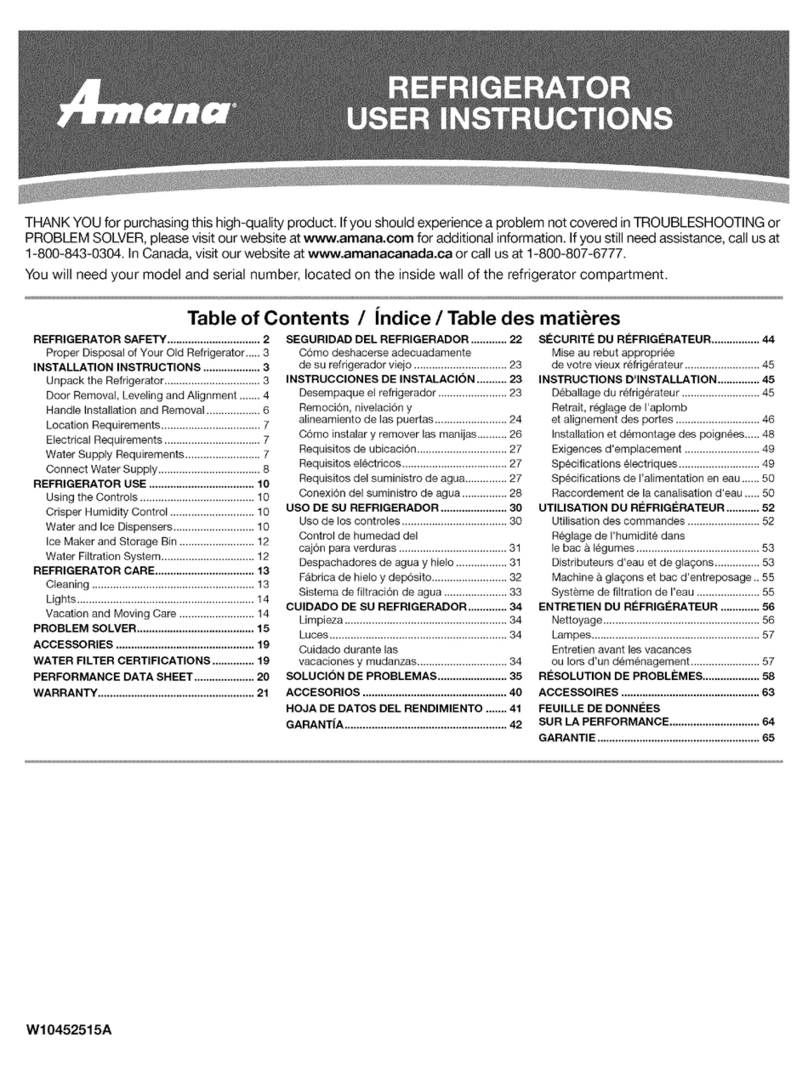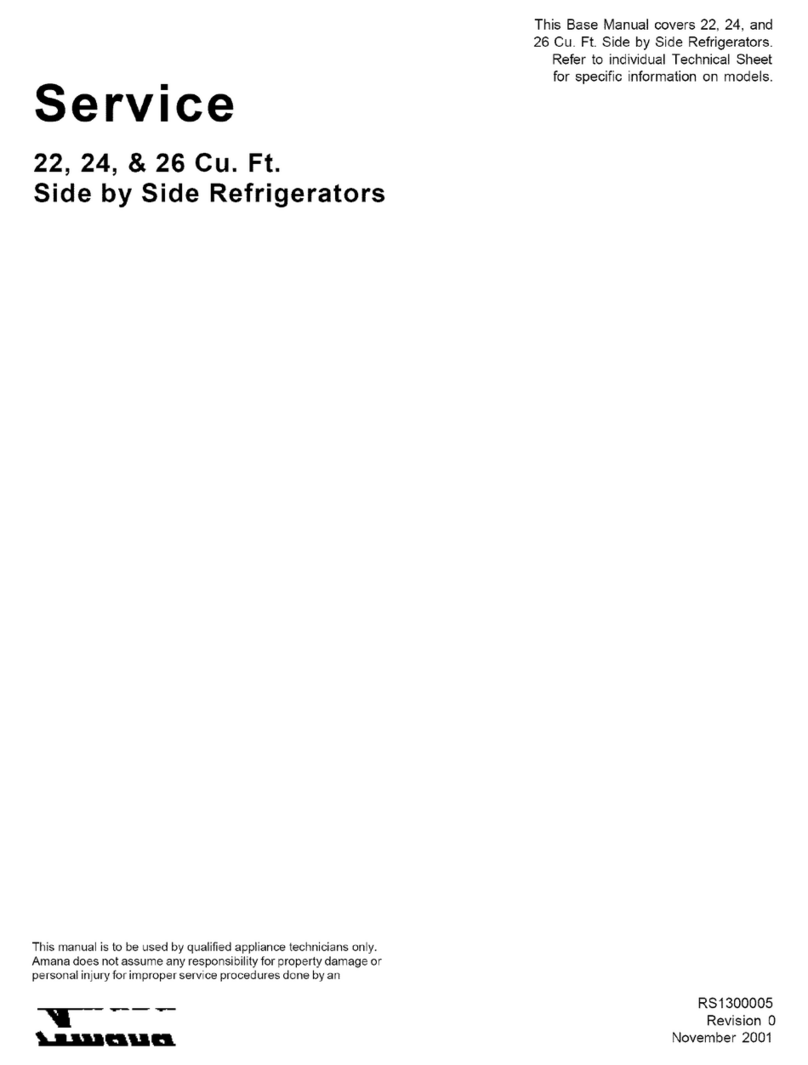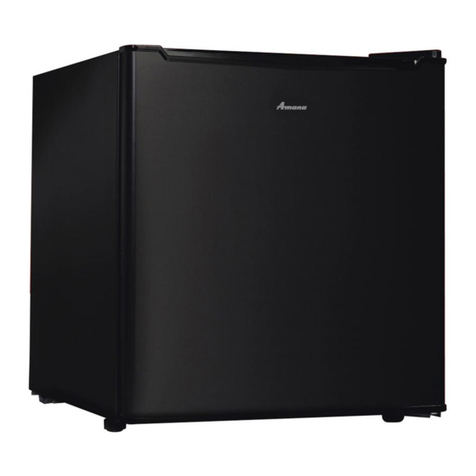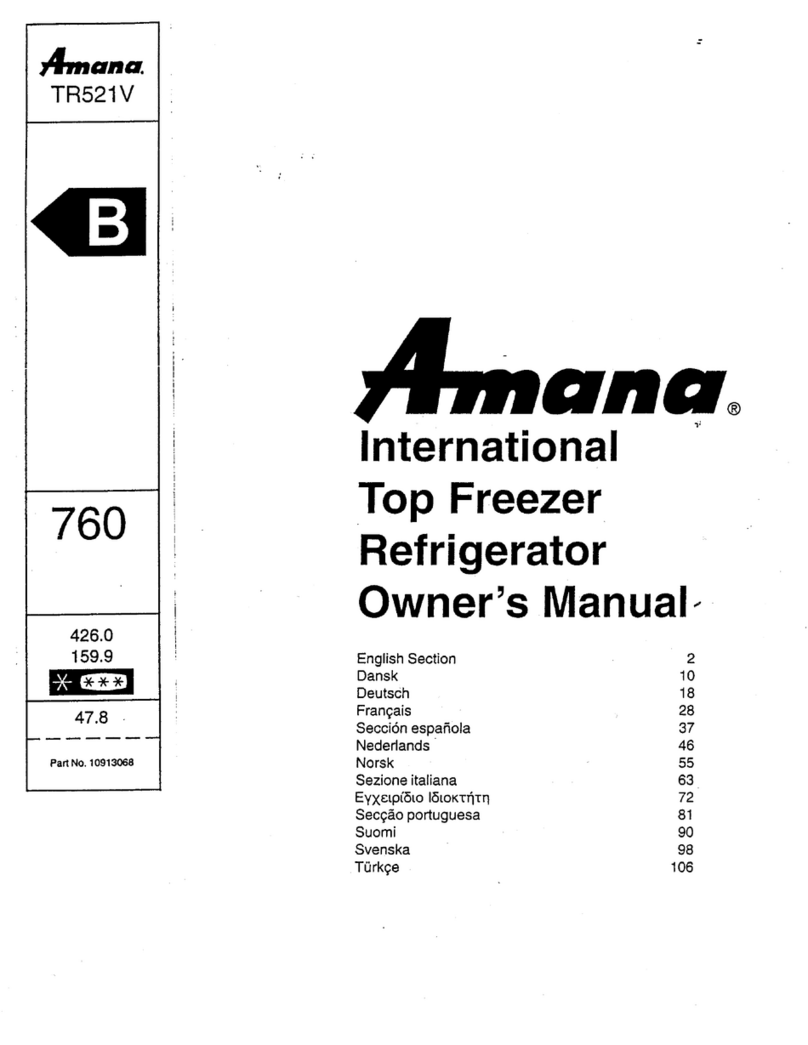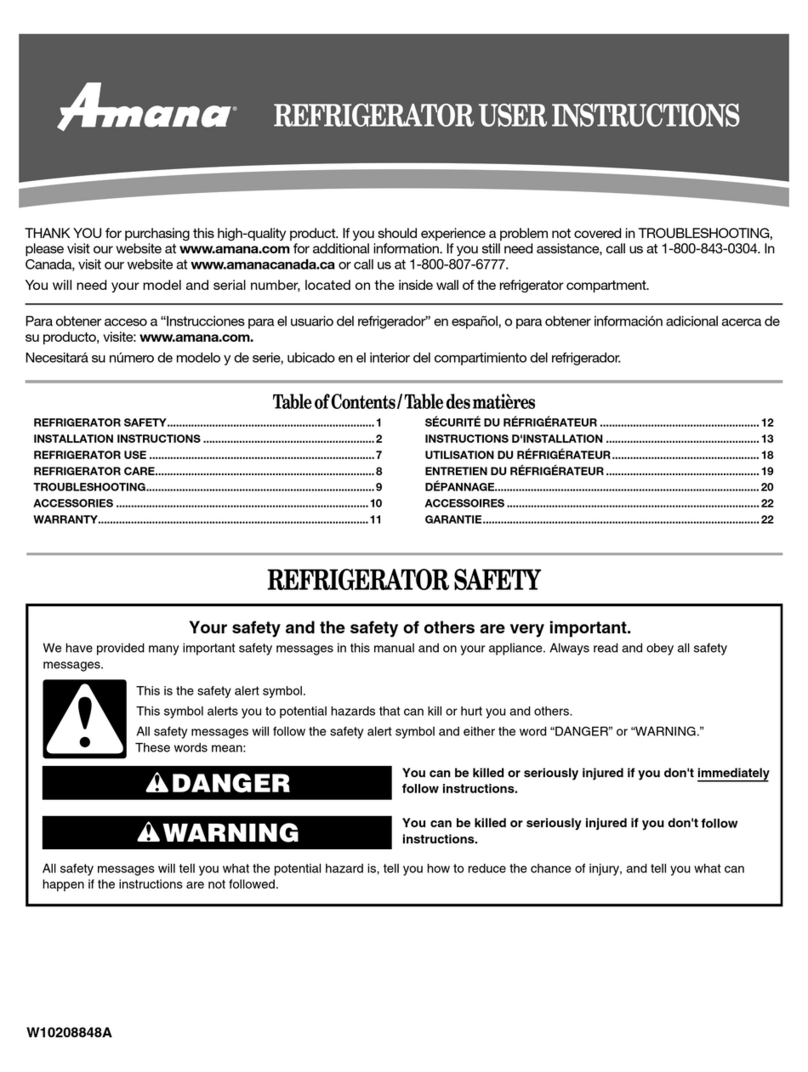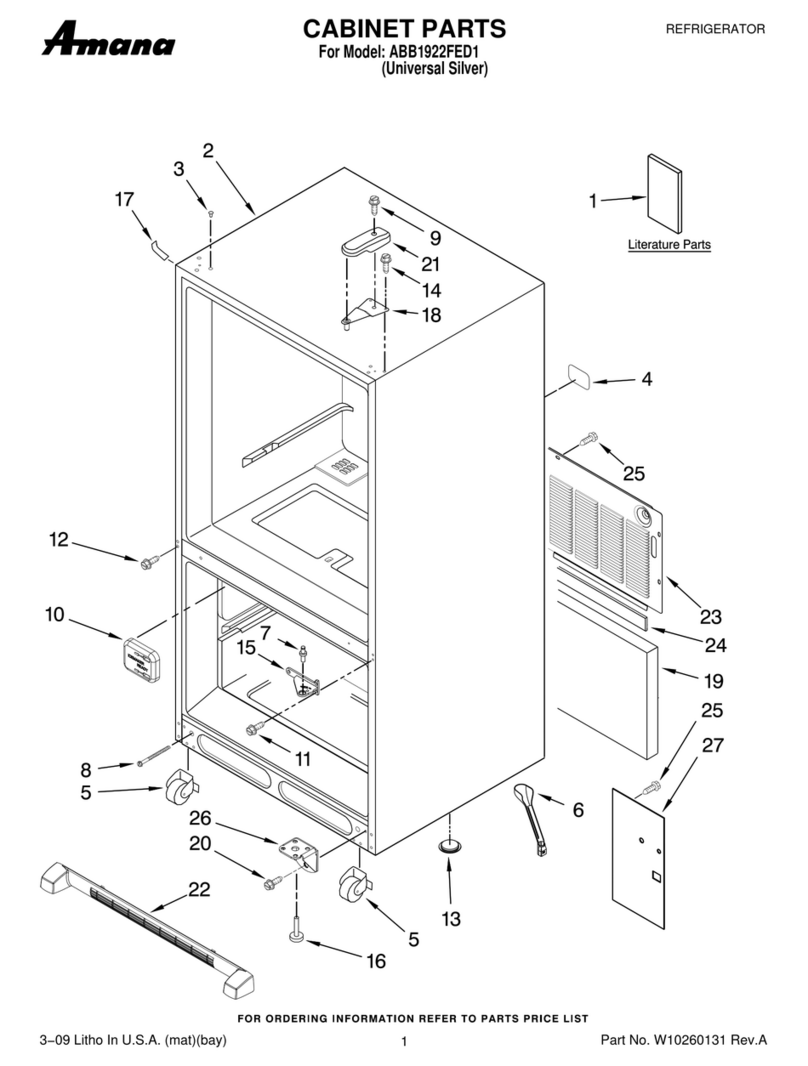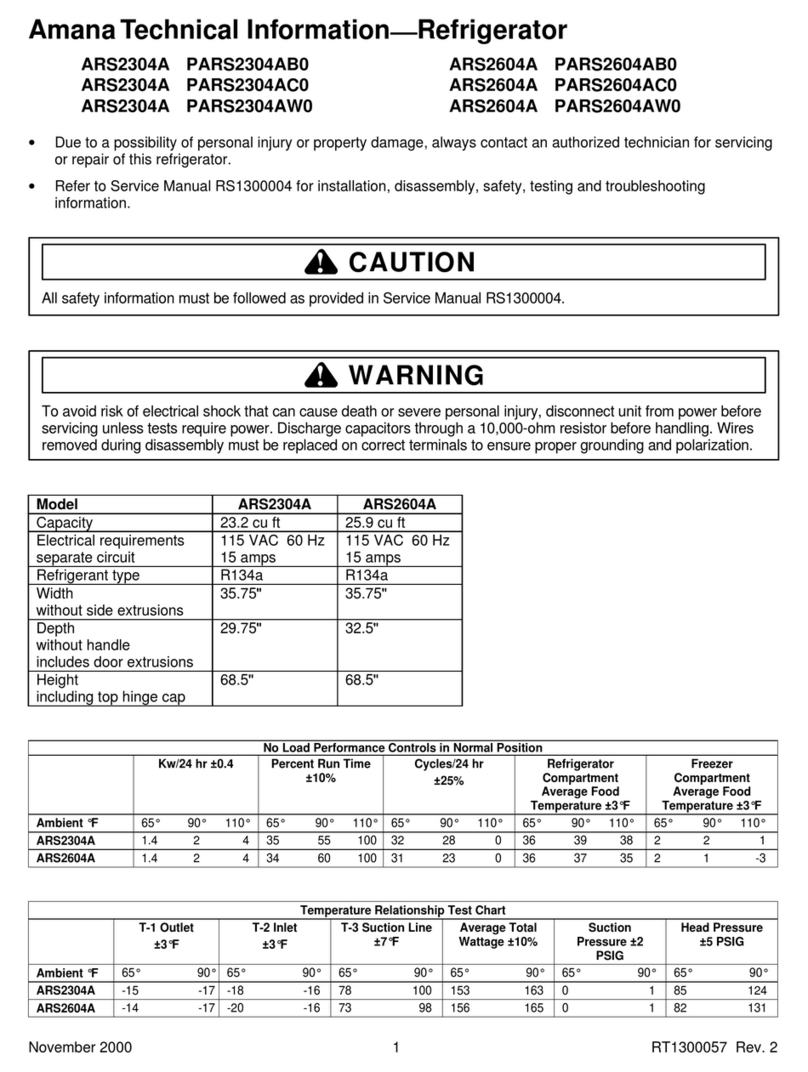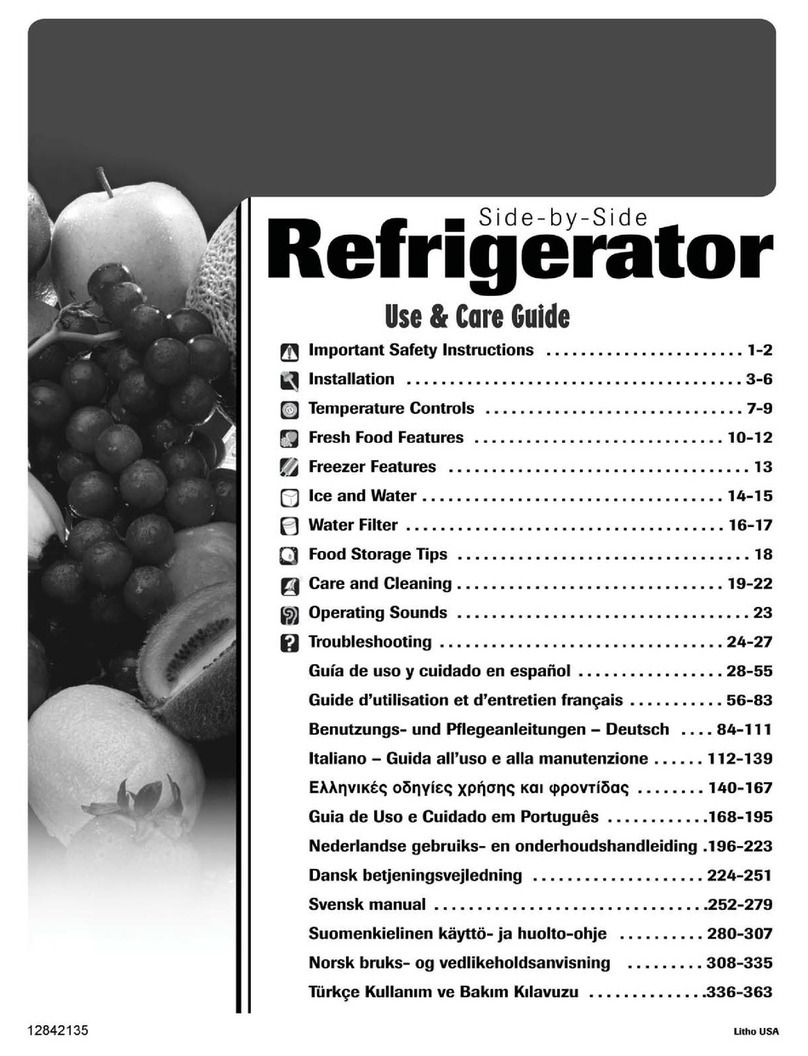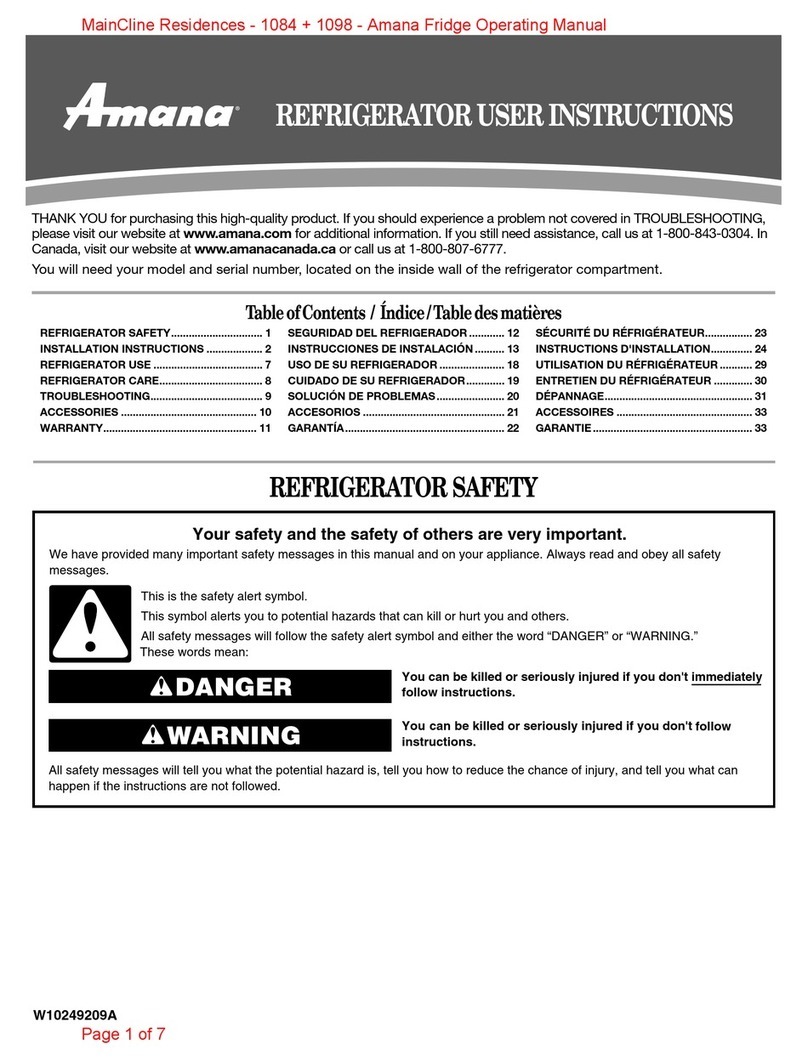
3RS1300004 Rev. 1
Table of Contents
Amana • 2800 220thTrail • PO Box 8901 • Amana, Iowa • 52204 • Printed in the U.S.A.
Important Information ..................................................2
Product Design
Refrigeration System ...............................................5
Temperature Controls
Electromechanical ...............................................5
Electronic............................................................5
Defrost Controls
Electromechanical ...............................................5
Electronic............................................................5
Other Features
Deli DrawerTM .............................................................................................................. 5
Beverage Chiller ...................................................5
Component Testing ....................................................6
Troubleshooting Procedure
Troubleshooting Chart:
Refrigerator Symptoms Related to Problems ........ 12
Troubleshooting Chart:
Sealed-System Conditions .................................. 15
System Diagnosis
Symptoms of Overcharge.................................... 16
Symptoms of Refrigerant Shortage ...................... 16
Symptoms of Restriction .................................... 16
Symptoms of Air in System ................................ 17
Symptoms Due to Improper Ambient
Temperature .................................................... 17
Heavy Heat Load................................................ 17
Service Procedures
Service Equipment ................................................ 18
Line Piercing Valves (Schroeder valves)................... 18
Open Lines ........................................................... 18
Brazing ................................................................ 18
HFC134a Service Information ................................. 19
Health, Safety, and Handling .................................. 19
Sealed-System Service ......................................... 20
Restrictions .......................................................... 20
Evacuation ........................................................... 21
Charging .............................................................. 22
Drier Replacement ................................................ 22
Replacement Service Compressor .......................... 23
Testing Replacement Compressor .......................... 23
Condensation Test ................................................ 24
Refrigerant Flow 23/26 cu. ft................................... 25
Refrigerant Flow 21 cu. ft. ...................................... 26
Air Flow 23/26 cu. ft. ............................................. 27
Air Flow 21 cu. ft................................................... 28
Disassembly
Refrigerator Door ................................................... 29
Remove Refrigerator Door (electronic unit) ............... 29
Remove Refrigerator Door (electromechanical unit)... 29
Disassemble Refrigerator Door (electronic controls).. 30
Disassemble Refrigerator Door
(electromechanical controls) ............................... 30
Remove Freezer Door (dispenser) ........................... 31
Remove Freezer Door (nondispensing) .................... 31
Disassemble Freezer Door (decorator) .................... 32
Disassemble Freezer Door (nondecorator) ............... 32
Disassemble Ice 'n' WaterTM Cavity ......................... 32
Refrigerator Cabinet ............................................... 34
Upper Refrigerator Light ......................................... 34
Temp-AssureTM Control Unit (electronic) .................. 34
Temp-AssureTM Control Unit (electromechanical) ...... 34
Water Filter and Tubing ......................................... 36
Water Tank and Tubing .......................................... 38
Freezer Cabinet .................................................... 39
Freezer Light/Auger Motor Interlock Switch ............. 39
Freezer Light Bulb & Light Socket .......................... 39
Auger Motor ......................................................... 39
Icemaker .............................................................. 39
Evaporator Disassembly
Thermistor (electronic only)................................. 40
Evaporator Cover ................................................ 40
Evaporator Fan .................................................. 40
Defrost Terminator (thermostat) ........................... 40
Defrost Heater ................................................... 41
Evaporator Coil .................................................. 41
Toe Grille.............................................................. 42
Defrost Timer (21 cu. ft.) ........................................ 42
Defrost Timer (23/26 cu. ft.).................................... 42
Lower Door Hinges ................................................ 42
Front Rollers ......................................................... 43
Rear Rollers ......................................................... 43
Drain Pan (21 cu. ft.) ............................................. 44
Drain Pan (23/26 cu. ft.)......................................... 44
High-Voltage Box (21 cu. ft. only) ........................... 44
High-Voltage Board (electronic only) ....................... 44
Power Switch (electronic only) ............................... 44
Machine Compartment
Primary Water Valve (before filter) ........................ 44
Secondary Water Valve (after filter) ...................... 44
Machine Tray ..................................................... 45
Drain Pan (23 & 26 cu. ft.) .................................. 45
Condenser Fan (21 cu. ft.) .................................. 45
Condenser Fan (23/26 cu. ft.).............................. 46
Compressor Run Capacitor ................................. 46
Overload & Relay ............................................... 47
Compressor....................................................... 47
Drier ................................................................. 47
Condenser......................................................... 47
Drain Tube......................................................... 47
